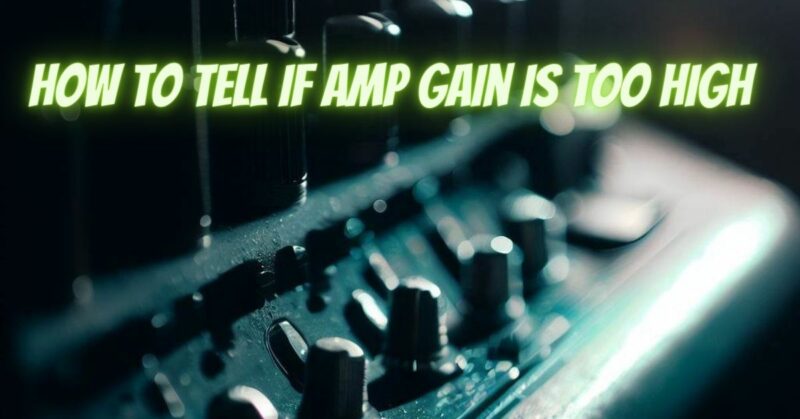Properly setting the gain on your stereo amplifier is crucial for achieving optimal audio performance. If the gain is set too high, it can lead to various issues, including distortion, clipping, and potential damage to your speakers. It is important to recognize the signs of excessive gain to ensure that your amplifier is operating within safe and desirable levels. In this article, we will explore common indicators that the gain on your stereo amplifier is too high. Let’s dive in!
- Distortion and Clipping: One of the primary signs of excessive gain is distortion or clipping in the audio signal. If you notice a harsh, distorted, or fuzzy sound, especially during louder passages or bass-heavy sections, it may indicate that the gain is set too high. Clipping occurs when the amplifier exceeds its maximum output level, resulting in a distorted waveform.
- Lack of Headroom: When the gain is set too high, it reduces the headroom of your amplifier. Headroom refers to the difference between the average volume level of your audio signal and the maximum level the amplifier can handle without distortion. If you find that your amplifier lacks headroom, meaning it quickly reaches its maximum output even at moderate volume levels, it suggests that the gain is set too high.
- Overheating: Excessive gain can cause your amplifier to generate more heat than it can dissipate, leading to overheating. If your amplifier feels excessively hot to the touch, even during normal use or at moderate volume levels, it may indicate that the gain is set too high. Overheating can potentially damage the internal components of the amplifier and degrade its overall performance.
- Speaker Cone Movement: Observe the movement of your speakers’ cones during playback. If the cones are visibly moving excessively, particularly during low-frequency or bass-heavy passages, it can indicate that the gain is set too high. The excessive movement may lead to physical strain on the speaker drivers, affecting their longevity and causing distortion.
- Audible Noise or Hiss: When the gain is set too high, you may notice an audible hiss or noise, especially during quiet or silent parts of the audio. This noise is often referred to as “background noise” or “white noise” and is more pronounced when the gain is excessively high. It can be distracting and compromise the overall audio quality.
- Protection Circuit Activation: Many amplifiers have built-in protection circuits that safeguard the amplifier and speakers from damage. If you frequently experience the protection circuit cutting in and shutting down the amplifier, it is a clear indication that the gain is set too high. The protection circuit activates when the amplifier is pushed beyond its safe operating limits.
Conclusion:
Recognizing the signs of excessive gain on your stereo amplifier is essential for maintaining optimal audio quality and protecting your speakers. Look out for signs such as distortion, lack of headroom, overheating, excessive speaker cone movement, audible noise or hiss, and protection circuit activation. If you notice any of these indicators, consider reducing the gain to a more appropriate level to ensure clean and undistorted sound reproduction while preserving the longevity of your audio equipment.


